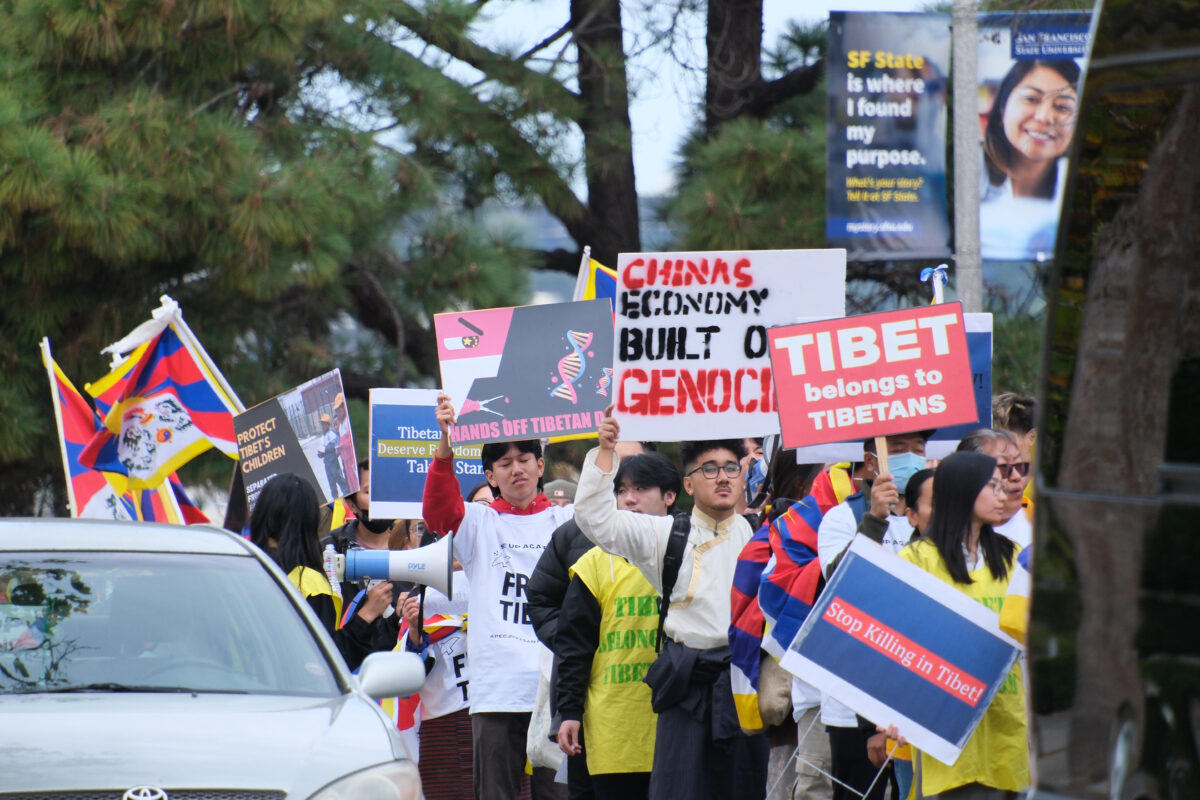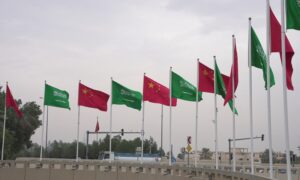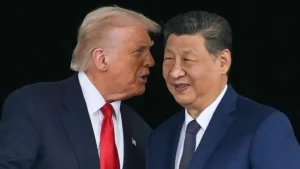Tibetan Resilience in the Face of Chinese Repression
China’s presence in Tibet has been a complex and contentious issue for decades. Tibet was annexed by the People’s Republic of China in 1950-1951. What is basically an invasion, the Chinese government refers to this as the “Peaceful Liberation of Tibet.” Although Beijing claims that Tibet is governed as an autonomous region of China, in practice, the Chinese government maintains strict control over the region. The Tibetan government-in-exile, led by the Dalai Lama, continues to advocate for greater autonomy and the preservation of Tibetan culture. There have been numerous reports of human rights abuses in Tibet, including arbitrary arrests, torture, and restrictions on freedom of expression and assembly. These issues have led to ongoing tensions and international criticism of China’s policies in Tibet.
The Chinese government has implemented several measures aimed at Sinicizing Tibet, which many critics argue are erasing its unique cultural identity. The Chinese government has introduced educational policies that emphasise Mandarin over the Tibetan language, reducing the use of Tibetan in schools. There are strict controls over religious practices and cultural expressions. Monasteries are closely monitored, and religious activities are often restricted. Large-scale migration of Han Chinese into Tibetan areas has been encouraged, which critics say dilutes Tibetan culture and identity. There is an increased presence of surveillance and policing in Tibetan regions, aimed at controlling and monitoring the local population. These actions have been described by some as a form of cultural genocide, as they significantly impact the preservation of Tibetan culture and identity.
Take for instance the recent closure of the Gangjong Sherig Norling School in Qinghai province has raised significant concerns. This school, a well-respected Tibetan-run private institution, was shut down by Chinese authorities on July 14, 2024. The official reason given was non-compliance with provincial education standards. However, many believe the closure is part of a broader effort to assimilate Tibetan culture into the dominant Han Chinese culture. The school was known for promoting Tibetan language and culture, which made it a target in the Chinese government’s campaign to enforce Mandarin-medium education and reduce the influence of Tibetan cultural practices. The closure has sparked outcry among Tibetans and human rights advocates, who see it as another step in the systematic erosion of Tibetan identity.
Across Tibet similar actions are being taken in the past under the guise of development. The Atsok Gon Dechen Choekhorling Monastery in Qinghai province was demolished to make way for a new hydropower project. This monastery, a significant cultural and religious site for Tibetans, was dismantled despite pleas from monks and the local community. The demolition is part of broader efforts by the Chinese government to prioritise economic development, often at the expense of cultural heritage.
There have been reports that Tibetan communities in Sichuan province are being forced to remove religious symbols from their homes. Chinese authorities have conducted searches in several villages, compelling Tibetans to take down prayer flags and destroy religious objects.
Prayer flags hold deep significance in Tibetan culture and are believed to carry prayers and mantras into the wind, spreading goodwill and compassion to all beings. Each colour represents an element: blue for sky, white for air, red for fire, green for water, and yellow for earth. They are an integral part of Tibetan Buddhist practices and are often found at religious sites, homes, and mountain passes and are a visual representation of the Tibetan people’s devotion and spiritual beliefs. The removal of these flags by Chinese authorities is seen as a significant cultural and spiritual loss. This is part of a broader effort by China to control and assimilate Tibetan culture, which has raised significant concerns among human rights advocates.
The Chinese government has also recently shut down two Tibetan Buddhist monastery schools in Sichuan province. This action is part of a broader campaign to replace monastic education with government-run secular schooling that emphasises Mandarin Chinese and Communist Party ideology. The closures have forced many young monks to leave their monasteries and enrol in these government-run schools. The impact on the local communities has been profound, as these schools were not only educational institutions but also centres of cultural and religious preservation.
The closure of the Gangjong Sherig Norling School in Qinghai province on July 14, 2024 has been a significant and controversial event. The school, known for its focus on Tibetan language and culture, was shut down by Chinese authorities. The official reason given was non-compliance with provincial education standards. However, it is yet another incident in the broader effort to assimilate Tibetan culture into the dominant Han Chinese culture. The school was a respected institution that played a crucial role in preserving Tibetan heritage. Its closure has sparked outcry among Tibetans and human rights advocates, who see it as another step in the systematic erosion of Tibetan identity.
Tibetans have employed various forms of resistance to counter the measures imposed by the Chinese government. Many Tibetans continue to practice their cultural and religious traditions in private, teaching the Tibetan language and customs to younger generations despite restrictions.
Tibetans have a long history of non-violent protests against Chinese repression. These protests have often been led by the Tibetan government-in-exile and supported by the global Tibetan community. There have been numerous peaceful protests and demonstrations, both within Tibet and by the Tibetan diaspora worldwide, to raise awareness about the situation and advocate for their rights. Tibetan leaders in exile, such as Tenpa Tsering, have accused China of systematically destroying Tibetan identity by promoting the Sinicization of Tibetan Buddhism and suppressing Tibetan culture.
The Tibetan government-in-exile, led by the Dalai Lama, and various Tibetan advocacy groups work tirelessly to bring international attention to the plight of Tibetans, lobbying for support from governments and international organisations.
In recent years, some Tibetans have resorted to self-immolation as a form of protest against Chinese rule. This tragic form of protest highlights the desperation and determination of Tibetans to draw attention to their plight
Tibetans and their supporters use social media and other digital platforms to share information, organise campaigns, and mobilise support globally. Tibetan artists, writers, and musicians create works that reflect their cultural heritage and the struggles they face, helping to keep their identity alive and raise awareness. Some Tibetans have established underground schools and informal education networks to ensure that Tibetan language and culture continue to be taught.
Tibetan calligraphy plays a crucial role in preserving Tibetan culture and identity. By practicing and teaching calligraphy, Tibetans maintain a connection to their heritage, especially in the face of efforts to suppress their language and traditions. Calligraphy has been used as a form of nonviolent resistance. Teaching Tibetan calligraphy is an important educational tool in Tibetan communities, both in Tibet and in exile. By continuing to write in Tibetan script, Tibetans assert their cultural identity and resist assimilation policies.
These efforts reflect the resilience and determination of the Tibetan people to preserve their identity and advocate for their rights. Unfortunately, these protests were often met with violent crackdowns by the Chinese government. While the international focus on Tibet has waned in recent years, Tibetan leaders continue to advocate for their cause. They emphasise that the repression in Tibet is part of a broader pattern of Chinese policies affecting other ethnic minorities, such as the Uyghurs. Despite the challenges, the Tibetan community remains committed to non-violent resistance and preserving their cultural identity.
The Tibetan cause has faced significant challenges in garnering consistent international support. China’s growing economic and political power has made many countries hesitant to confront it, leading to a muted response on Tibet. The Tibetan issue is often framed as a human rights concern rather than a political one, it fails to bring attention to the Tibetan cause.
Internationally governments can use diplomatic channels to pressure China to respect human rights in Tibet. This includes raising the issue in bilateral talks and international forums like the United Nations. Countries can pass laws that support Tibetan autonomy and human rights. For example, on July 12, 2024, the US Congress passed the Promoting a Resolution to Tibet-China Dispute Act, also known as the Resolve Tibet Act. This legislation aims to promote a peaceful resolution to the Tibet-China dispute according to international law and the United Nations (UN) Charter through peaceful dialogue without preconditions. It is the third notable act by the US government regarding Tibet, following the Tibetan Policy Act (2002) and the Tibetan Policy & Support Act (2020).
Various UN bodies, including the Office of the High Commissioner for Human Rights (OHCHR), have documented human rights abuses in Tibet. These reports highlight issues such as restrictions on religious freedom, arbitrary detentions, and cultural repression. Despite these efforts, the UN’s impact is limited by the political influence of China, a permanent member of the UN Security Council. This makes it challenging to achieve significant action or resolutions specifically addressing Tibetan rights.
Implementing targeted sanctions against Chinese officials responsible for human rights abuses in Tibet can be an effective measure. Additionally, countries can review trade policies to ensure they are not complicit in the repression of Tibetans. Providing asylum and support for Tibetan refugees helps them rebuild their lives and continue their cultural practices. Countries like India, the United States, and several European nations have been instrumental in this regard.
Financial support for Tibetan communities in exile and organisations working for Tibetan rights can make a significant difference. This includes funding for education, healthcare, and cultural preservation. Publicly condemning human rights abuses in Tibet and passing resolutions in support of Tibetan autonomy can help keep the issue in the global spotlight. Promoting cultural exchange programs that highlight Tibetan culture and heritage can foster greater understanding and support for the Tibetan cause.













